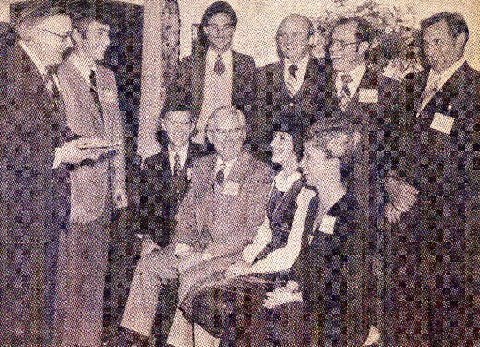AN EDUCATIONAL JOURNEY
January 16, 2012
Through the years, our schools are often impacted by cultural changes and current events. Clearly, this has been the case during the past sixty-one years...the time frame in which this columnist has been an educational practitioner on the scene.
During the period of the 1940's and much of the 1950's , many of the so called "modern schools" considered themselves to be on the cutting edge in education. Self-contained, heterogeneously grouped classrooms were common place. The school without walls and/or the open classroom was popular in some districts. Individualization of instruction was key and students were assigned to classrooms with their own age group. Much of the instruction was coordinated learning, where there was correlation of subject matter, not by subject matter discipline, but by topics or units of interest. Core learning was the term used in the educational lexicon. Continuous promotion was popular, and final examinations to determinant academic promotion was "a thing of the past." The non-graded school took on prominence. Competition in the classroom among students was not necessarily encouraged. The philosophical thrust was: students do best when they succeed on their own momentum, motivated by desire, a "wanting to know," and pride in accomplishment.
History changed on October 4, 1957, when the Soviet Union successfully launched Sputnik I. Competition in the space race began and greater competition in the academics was high-lighted. Also, there was a thrust to place greater resources into guidance programs to assist students in a quest for preparation to enroll in college. Much of this was driven to compete and surpass those as part of the cold war scene.
Almost immediately, subject matter specialization, even at the elementary level, was emphasized. Homogeneous grouping of students was strongly advocated by some parents, particularly those parents who felt that their child would surely fall into the "top group". Programs for the gifted and talented were proposed and initiated. Many parents advocated the assignment of percentage grades in place of "S" "U" or of letter grades. An increased amount of homework was loaded on by the schools.
Programs in the academic sciences received significant attention as well as financial support. Modern mathematics became a flash point in many of the schools. Book publishers competed among themselves to develop the most "modern of math" programs. There was a renewal of communications among foreign nations, and foreign language was emphasized in the schools. Foreign language instruction at the primary level was advanced.
"Johnny Can't Read" was a concern among parents. Increased attention was given to phonics in the reading programs. The Initial Teaching Alphabet (ITA) was introduced in some schools. And then, whole language became popular within the education lexicon. The whole language methodology entered the scene, in some ways, to counterpose ITA. No wonder, some students... and their parents too.... became confused when transferring to another school system. Consternation among parents seem to prevail, when students were being instructed in modern math or in a different reading system, in which parents had little familiarity from their own student days. Parent/teacher conferencing, as a planned reporting procedure, became increasingly widespread
In the early 1970's, Dr. Larry Lezotte, identified the Correlates of Effective Schools and that movement has had some prominence in the schools from the late 1970's to the present day. Also, added to the education lexicon were such significant concepts as: inclusion, age appropriate, and values clarification and modification. Competency based teacher education moved into the forefront. And school administrators were required to meet certain administrative competencies in order to meet newer and more rigid certification requirements. The proposed program for the preparation of school administrative personnel at SUNY Fredonia was fully approved by the New York State Education Department and was heralded as an exemplary Program of distinction.
During these past years, there has been an avalanche of federal and state legislation passed and agency regulations put into place, impacting education and schools. Unfunded mandates began to strangulate school budgets. Court decisions impacting schools had been on the increase. Programs such as Head Start, Job Corps, subsidized lunches, and Title One began during this time. Some school systems found it almost a necessity to employ a full time legal council to interpret the legality of various issues.
Behavioral learning objectives was added to the lexicon. These objectives often guided instruction during the 1960's and this approach opened up a new wave of approaching the evaluations of learning outcomes. More attention was given to meeting specific grade standards, once grade standards were established. Text book publishers often determined curricular content and standards. Company produced achievement tests were developed and achievement testing became a standard school practice. And a whole new thrust of testing and more testing quickly spiraled. And, then, with more required testing, there appeared to be
less time available for solid teaching. But, more solid teaching was in demand and hence, a
dilemma ensued. The headlines in the media seem to suggest that "Schools were in Crisis."
School testing and teacher accountability seemed to move into the forefront. And that leads us to the next part of this series... Part 3.
1978 photo of the first graduates of the Program in Educational Administration at SUNY Fredonia. Along with the gradates are: President Beal, Dean Zeman, Dr. Vacc, and Dr. Heichberger.
January 30: Part Three
